Malta, an Historic Gem in the Mediterranean
An historic island with 70 centuries of history on show
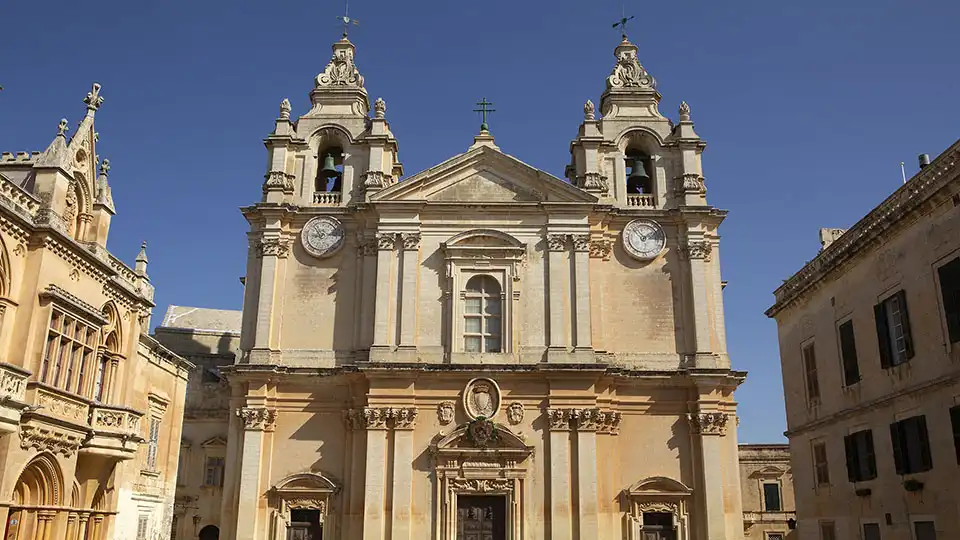
St Pauls Cathederal, Mdina, Malta
Introducing Malta
Living in the present, but with 7,000 years of ruins and artifacts, and a cultural blend distilled from the many influences that have washed over it, Malta is both unique and fascinating. Malta has prehistoric temples dating from before 5000 BC, further temples from around 3600 BC that were from a distinctly different culture, right up until about 2600 BC. These dates are being constantly rev ised as archeologists continue their work on this fascinating island (and, it should be added, the nearby island of Gozo).
Since that time, Malta has experienced waves of migration and conquest too numerous to mention. In summary though, all the major historical Mediterranean cultures have been involved. From Mycaenaean to Phoenician to Carthaginian in antiquity, the Romans and later the Byzantines, the Arabs and the Normans to the French and the British. All have played their part in creating this tapestry of human civilisation.
Some More History
Where do you start with the history of Malta. Sitting in the middle of the Mediterranean it is on the crossroads for all classic civilations from before the times of the Mycenae to the present day.Situated in the Mediterranean Sea, south of Sicily, Malta's strategic location has made it a crossroads of cultures and a coveted prize for numerous powers throughout history.
Ancient times saw Malta inhabited by prehistoric cultures, with the enigmatic megalithic temples dating back to around 3600 BC, making them some of the oldest free-standing structures on Earth. These temples showcase advanced architectural and engineering skills of the island's early inhabitants.
Over the centuries, Malta fell under the influence of various civilizations, including the Phoenicians, Carthaginians, and Romans. The latter's rule brought stability and urban development, as evidenced by the ancient city of Mdina. With the fall of the Roman Empire, the island saw a series of conquerors, including the Vandals and Byzantines.
In 870 AD, the Arab forces captured Malta, introducing Islam and reshaping its cultural landscape. The Normans eventually wrested control in 1091, ushering in a period of Christianization and integrating the island into the Kingdom of Sicily. The Swabians, Angevins, and Aragonese successively ruled Malta, each leaving their mark on the island's architecture and society.
The most significant chapter in Malta's history came in 1530, when the Knights Hospitaller, a Catholic military order, were granted the island by the Holy Roman Emperor Charles V. The Knights, also known as the Knights of Malta, transformed the island into a formidable fortress and played a crucial role in defending Christendom from Ottoman expansion. The Great Siege of Malta in 1565, where the Knights successfully repelled the Ottoman forces, is a defining moment in Maltese history.
In 1798, Napoleon Bonaparte seized Malta from the Knights, but his rule was short-lived, as the British intervened and established control in 1800. Malta became a British colony and an important naval base in the Mediterranean, particularly during World War II. The island endured heavy bombing during the war but displayed remarkable resilience.
Malta's quest for self-determination gained momentum in the post-war era. In 1964, it achieved independence within the British Commonwealth, and in 1974, it became a republic. The close relationship with the UK continued, and in 1979, Malta hosted a historic summit between U.S. President George H.W. Bush and Soviet leader Mikhail Gorbachev, marking a thaw in Cold War tensions.
The 21st century brought new challenges and opportunities. Malta joined the European Union in 2004, a move that spurred economic growth and modernization. The country's tourism industry flourished, capitalizing on its historical and cultural attractions, as well as its stunning coastline.
Malta's history is a story of resilience, adaptation, and the convergence of cultures. From its ancient megalithic temples to its role as a strategic hub in the Mediterranean, the island's past continues to shape its present and future as a vibrant and dynamic nation.
About The Area
The People
Throughout its history, Malta's cultural identity has been shaped by a unique blend of influences from Mediterranean, European, and North African cultures. The Maltese language, a fusion of Arabic, Italian, and other languages, reflects this diversity.
The ethnic makeup of Malta is characterized by its historical and geographic influences, which have resulted in a diverse population. The majority of the population identifies as ethnically Maltese, but the island's strategic location in the Mediterranean has led to a rich blend of cultures and ancestries.
The core of the Maltese ethnic group is of Mediterranean descent, with influences from Phoenician, Roman, Arab, and Norman civilizations that have shaped the island's history. The indigenous Maltese language reflects these various cultural influences. Additionally, the majority of Maltese people practice Roman Catholicism, which has further contributed to their cultural identity.
Throughout its history, Malta has attracted various settlers, traders, and conquerors due to its strategic position. This has led to an influx of different ethnic groups and influences. The Arab rule in the Middle Ages, followed by the presence of the Knights of St. John and later the British colonial period, brought additional cultural layers to the population.
In modern times, Malta's role as a Mediterranean crossroads has attracted expatriates, immigrants, and foreign workers, contributing to the ethnic diversity of the country. Italian, British, and North African influences are among those visible in the ethnic composition.
The global nature of modern society has also brought about intercultural marriages and international connections, further enriching Malta's ethnic makeup. As a member of the European Union, Malta has become more connected to the wider European community, contributing to its cultural diversity.
While the majority of Malta's population identifies as ethnically Maltese, the island's history of invasions, trading relationships, and migrations has created a complex and diverse tapestry of cultures and ancestries that contribute to the unique and multicultural identity of the nation.
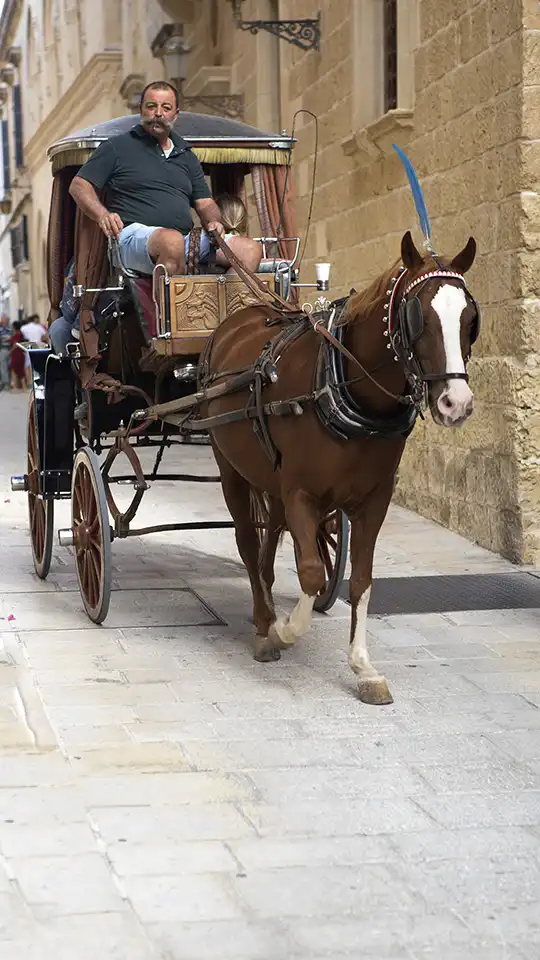
The Cuisine
Maltese cuisine is a flavorful fusion of Mediterranean influences, reflecting the island's rich history and cultural diversity. This unique culinary tradition is characterized by its use of fresh, locally sourced ingredients and a mix of traditional recipes passed down through generations. With its proximity to the sea and fertile land, seafood, vegetables, and grains play a central role in Maltese dishes.
Fish and seafood are staples of Maltese cuisine, with favorites like lampuki (dolphin fish), swordfish, and octopus commonly found on menus. Traditional dishes like Aljotta,, a hearty fish soup, and Fenek Moqli, fried rabbit, are popular choices showcasing the island's flavors. Pastizzi, flaky pastry filled with ricotta or mushy peas, are beloved street snacks.
Bread is a fundamental element of Maltese meals, often accompanied by local olive oil, tomatoes, and capers. The national dish, Ftira, is a hearty sandwich filled with a variety of ingredients, such as tuna, olives, and vegetables. Gbejniet, small round cheeselets made from goat's milk, are another cherished part of Maltese food culture.
Influences from neighboring regions are evident in dishes like Bragioli, thin slices of beef stuffed with bacon, egg, and herbs, reminiscent of Italian involtini. Timpana, a pasta dish with baked layers, akin to Sicilian pastries.
Maltese sweets and desserts are delightful, with treats like Qubbajt, a nougat made with almonds and honey, and Imqaret, date-filled pastries. The island's famed liqueur, Bajtra, derived from prickly pears, is often used in cocktails or enjoyed on its own.
Maltese cuisine encapsulates the island's history, blending indigenous flavors with influences from Italy, North Africa, and the Middle East. It reflects the resilience of the Maltese people, their resourcefulness in creating hearty and diverse dishes, and the deep connections between their food and cultural heritage.
Things To Do
Sights
- Ancient Megalithic Temples: These temples, dating back to around 3600 BC, are some of the oldest free-standing structures in the world. Notable sites include Ġgantija, known for its colossal stone blocks, and Ħaġar Qim and Mnajdra, which feature intricate carvings and alignments with astronomical events.
- Mdina: Often referred to as the "Silent City," Mdina is a fortified medieval town characterized by narrow, winding streets and stunning architecture. With a history dating back over 4,000 years, Mdina offers visitors the chance to step back in time and explore its rich cultural heritage.
- Valletta: The capital city of Malta, Valletta, is a UNESCO World Heritage site renowned for its well-preserved Baroque architecture and historic significance. Highlights include St. John's Co-Cathedral, which houses intricate tapestries and Caravaggio paintings, and the Grand Master's Palace, showcasing opulent rooms and fascinating artifacts.
- St. John's Co-Cathedral: This magnificent Baroque cathedral in Valletta is a masterpiece of art and architecture. Its unassuming exterior contrasts with the lavish interior adorned with intricate marble work, gilded decorations, and Caravaggio's renowned painting, "The Beheading of Saint John the Baptist."
- Grand Master's Palace: Situated in Valletta, this historic palace served as the residence of the Grand Master of the Knights Hospitaller. It now houses the Office of the President and the Palace State Rooms, which exhibit a rich collection of armor, tapestries, and portraits from Malta's past.
- Blue Grotto: A series of sea caves on Malta's southern coast, the Blue Grotto offers breathtaking natural beauty with its deep blue waters and intricate rock formations. Boat tours provide an opportunity to explore the caves and experience the stunning interplay of light and color.
- Hagar Qim and Mnajdra Temples: These UNESCO-listed Neolithic temple complexes offer a glimpse into Malta's prehistoric past. The temples are adorned with intricate carvings and are believed to have served as places of worship and rituals, showcasing the advanced skills of ancient builders.
- The Three Cities (Vittoriosa, Senglea, Cospicua): These fortified cities, collectively known as the Three Cities, played a pivotal role in Malta's history. With historic maritime connections, they offer charming streets, waterfront views, and landmarks that reflect the island's rich heritage.
- Gozo's Azure Window (formerly): While the natural rock arch known as the Azure Window sadly collapsed in 2017, its legacy remains as a symbol of Gozo's unique geological formations and the captivating beauty of the Maltese islands.
- Hypogeum of Ħal-Saflieni: An underground complex and UNESCO World Heritage site, the Hypogeum is an ancient burial site and temple that offers insights into Malta's prehistoric beliefs and architectural achievements.
- Marsaxlokk: This quaint fishing village is known for its colorful traditional boats, called "Luzzus," and its bustling Sunday fish market. It provides a glimpse into Malta's maritime culture and offers a relaxing atmosphere by the sea.
- St. Paul's Cathedral: Located within the historic city of Mdina, St. Paul's Cathedral is an impressive example of Baroque architecture and an important religious site. Dedicated to the apostle St. Paul, the cathedral's intricately designed interior features marble columns, fine artwork, and a magnificent dome. It also houses a museum that showcases religious artifacts and historical items, offering visitors a deeper understanding of Malta's spiritual heritage.
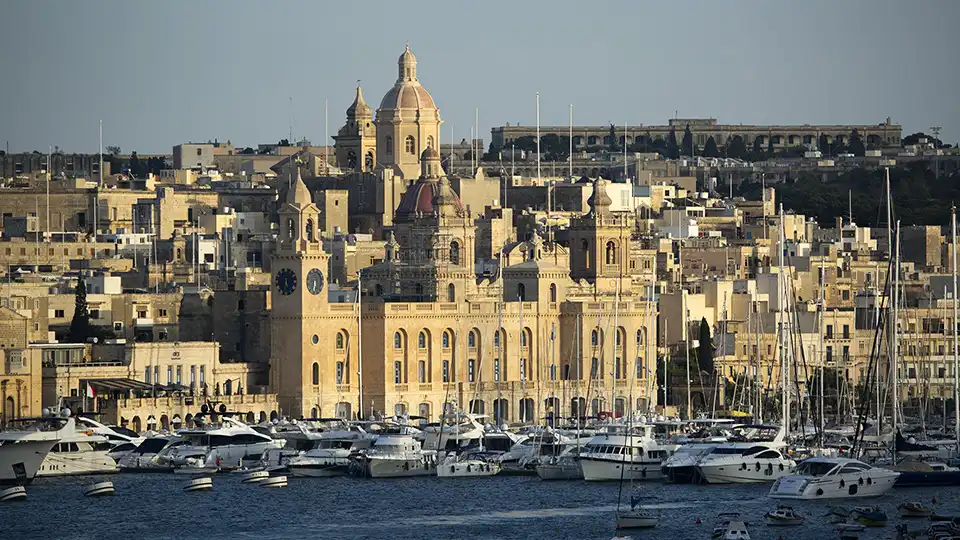
Valetta Harbour at Dusk
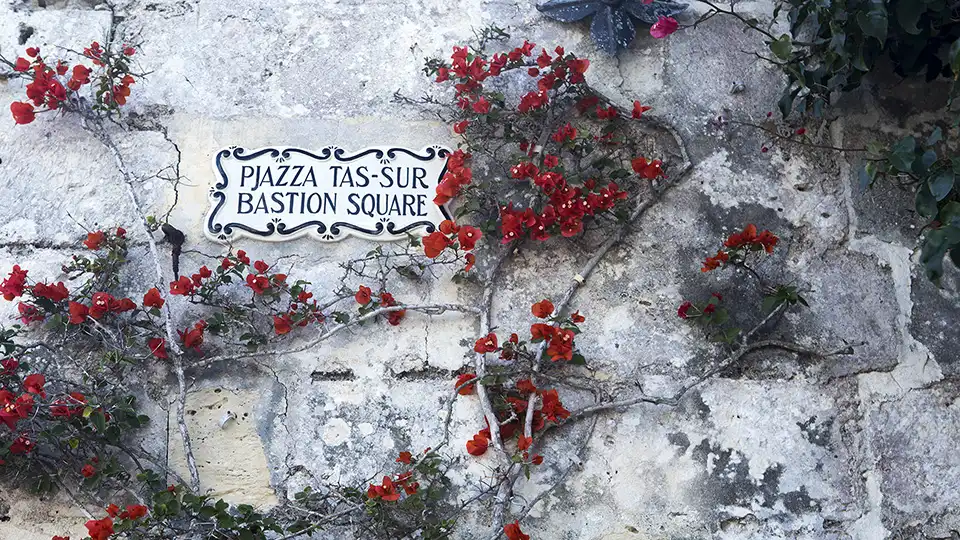
Bastion Square, Mdina (purchase this)
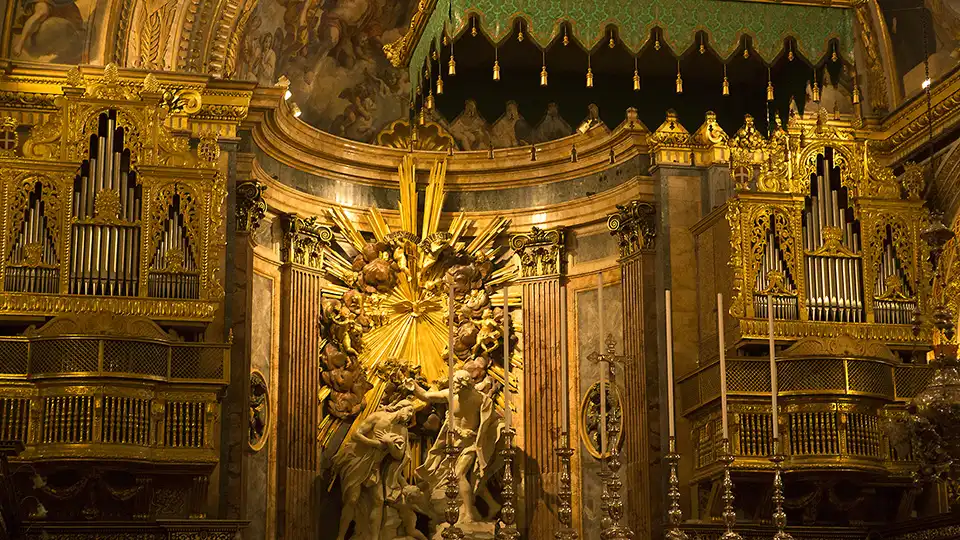
Interior of St Johns Co–Cathedral, Valetta
Places to Stay
Luxury Hotels
- Domus Zamittelo is a restored 17th century palazzo, located at the beginning of Republic Street at the entrance to the city of Valletta, close to shopping and many cultural highlights
- Iniala Harbour House is a Forbes 5 Star rated hotel overlooking the spectacular Valletta harbour. It is a boutique hotel with just 23 rooms.
- Palazzo Bifora is located in the heart of Malta's Silent City, Mdina. The hotel is located an an ancient building wit hsome elements dating to the 12th century
- Palazzo Castagna Boutique Hotel is a restored 17th century palace in the historic and inland town of Hal Ghaxaq.
- Casa Ellul is located in the heart of Valletta close to all the cultural highlights and restaurants. It is an authentic Victorian mansion with all modern conveniences.
- Corinthia St George's Bay is a large, resort–style hotel with multiple pools, restaurants and all modern facilities.Spectacular views over St George's Bay
- Radisson Blu Resort & Spa, Malta Golden Sands
- Hilton Malta
- Radisson Blu Resort, Malta St. Julian's
- The Zara Palace Relais & Chateaux
- Cugó Gran Macina Malta
Book Accomodation Through booking.com
Booking.comGetting There & Getting Away
Air
- Air Malta: The national airline of Malta, offering a range of domestic and international flights to and from the island.
- Ryanair: A low-cost carrier based in Ireland, known for its extensive network of routes across Europe.
- British Airways: The flag carrier of the United Kingdom, offering flights from major cities to Malta.
- Lufthansa: The largest German airline, providing connections to Malta from various European cities.
- Emirates: The flagship carrier of the United Arab Emirates, offering international flights to and from Malta.
- Turkish Airlines: The national carrier of Turkey, providing connections between Istanbul and Malta.
- Aer Lingus: The flag carrier of Ireland, offering flights to Malta from Dublin and other cities.
- Wizz Air: A Hungarian low-cost airline with a focus on Eastern and Central Europe, connecting Malta to various destinations.
- Alitalia: The flag carrier of Italy, providing flights to Malta from major Italian cities.
- KLM Royal Dutch Airlines: The national airline of the Netherlands, offering connections to Malta through its hub in Amsterdam.
- Qatar Airways: The state-owned flag carrier of Qatar, connecting Malta to its extensive international network.
- EasyJet: A British low-cost airline, providing affordable flights between Malta and various European cities.
- Air France: The flag carrier of France, offering flights from Paris and other cities to Malta.
- Swiss International Air Lines: The national airline of Switzerland, providing connections to Malta from Zurich and Geneva.
- Austrian Airlines: The flag carrier of Austria, offering flights to Malta from Vienna and other cities.
- EgyptAir: The flag carrier of Egypt, connecting Malta to destinations in the Middle East and Africa.
- Finnair: The national carrier of Finland, providing flights between Helsinki and Malta.
- Air Serbia: The flag carrier of Serbia, connecting Malta to its network in Eastern Europe and beyond.
- Jet2.com: A British low-cost airline, offering flights to Malta from several UK airports.
Ferry
There are ferries to Malta from two ports in Sicily — Catania and Pozzallo. There are sailings to each of these Sicilian ports just about every day
There is a regular ferry service to the island of Gozo (legally part of Malta), with about 30 sailings per day. The Gozo ferry departs from Ċirkewwa on the western end of Malta. It is possible to catch a local public bus to the ferry port.
Getting Around
Bus
Malta has a modern European bus system, with regular departures day and night. The cash fare is €2.00 for the day routes and €3.00 for the night routes. The night routes are distinguished by preceding the route number with a letter N e.g. the N11 or N212 routes.
Fares can be paid directly to the driver, and exact change is appreciated. There are also various pre–paid cards which offer a discounted price
Taxis and Rideshare
There are three main taxi apps to use in Malta. You can use Uber, which is the most recently launched of the three big taxi apps in Malta, but you’ll also want to have Bolt and eCabs downloaded to use in Malta.
Taxis are available and use a meter system
Emergency Contacts
112 is the only emergency number in Malta. The average time to answer a 112 call is 5 seconds. The Advanced Mobile Location (AML) service is available in Malta. The European emergency number 112 is the only emergency number in Malta.
Summary
Malta is a little slice of paradise in the heart of the Mediterranean with a history that is alive, echoing through every cobblestone. It is a feast for the eyes and a carnival for your taste buds. If you're feeling adventurous, dive into the clear blue waters or take a stroll along the Dingli Cliffs. Valletta, with its forts, churches, and gardens, is a living testament to history. Whether you're a history buff, a beach lover, or just seeking a taste of something different, Malta invites you to write your own story.
Copyright © 2025 travel-with-mark.com. All rights reserved. No part of this website or any of its contents may be reproduced, copied, modified or adapted, without the prior written consent of the owner, unless otherwise indicated for stand-alone materials. Unauthorized use is strictly prohibited. All trademarks, service marks, and trade names used in this website are the property of their respective owners and are used for identification purposes only. Your access to and use of this website is subject to our terms and conditions. Details of our privacy practices may be found in our privacy notices